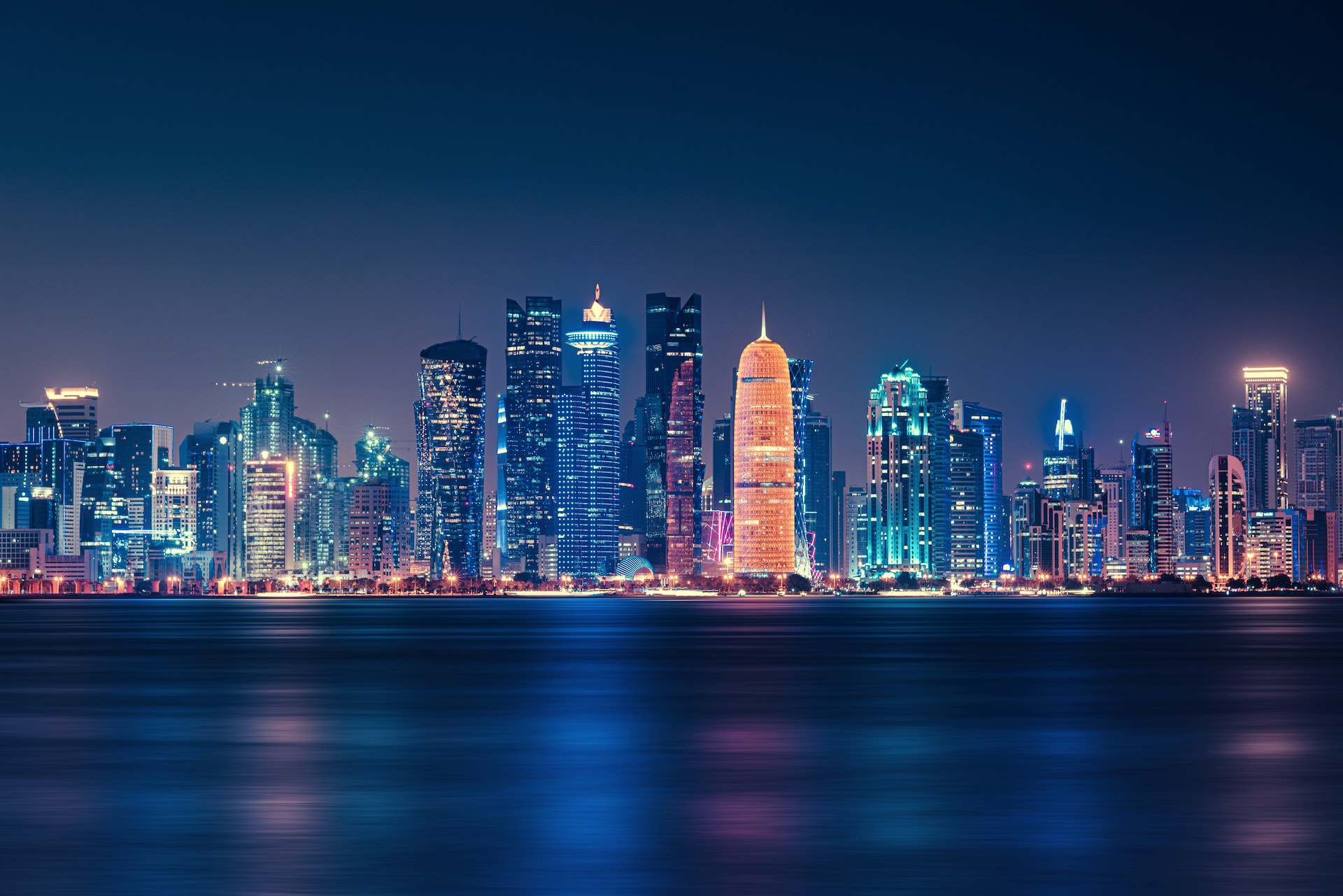Qatar will host the Football World Cup in 2022, and myriad events in the lead-up. Nick Walton explores this tiny, desert nation to see how the Qatari are preparing for the future while safeguarding their past.
I’m trying my very best to remember a late-night Discovery Channel special on camels. What was it they did again? Was it bite or spit? I really don’t want to be spat at by a camel. But I don’t want to be bitten either. Maybe I should just play dead?
It’s early morning at Al Sheehaniya, just outside Doha, in the expansive, featureless Qatari desert, where the petite nation’s largest camel racing track is already bustling. Through dancing eddies of fine desert sand, towering camels pass within reach, dressed in brightly colored saddle cloths, their Sudanese trainers perched casually on top of swaying humps. The animals are beautiful, their
limbs moving with the fluid gracefulness of a Bolshoi principle as they canter, their thick eyelashes flicking away the desert dust while their trainers coo in ancient tongues.
Everywhere you go in this pint-sized but oil-rich nation, you see the marriage of the past and the future, of antiquity and modernity. Camel racing is a prestigious and ancient sport in many Middle Eastern countries and represents big bucks here in Qatar. For as far as the eye can see, camel studs hug the lone highway into the nothingness of the desert, and on race days the trackside is packed with hundreds of iconic Toyota Land Cruisers, while VIPs sip tea in the covered grandstand.
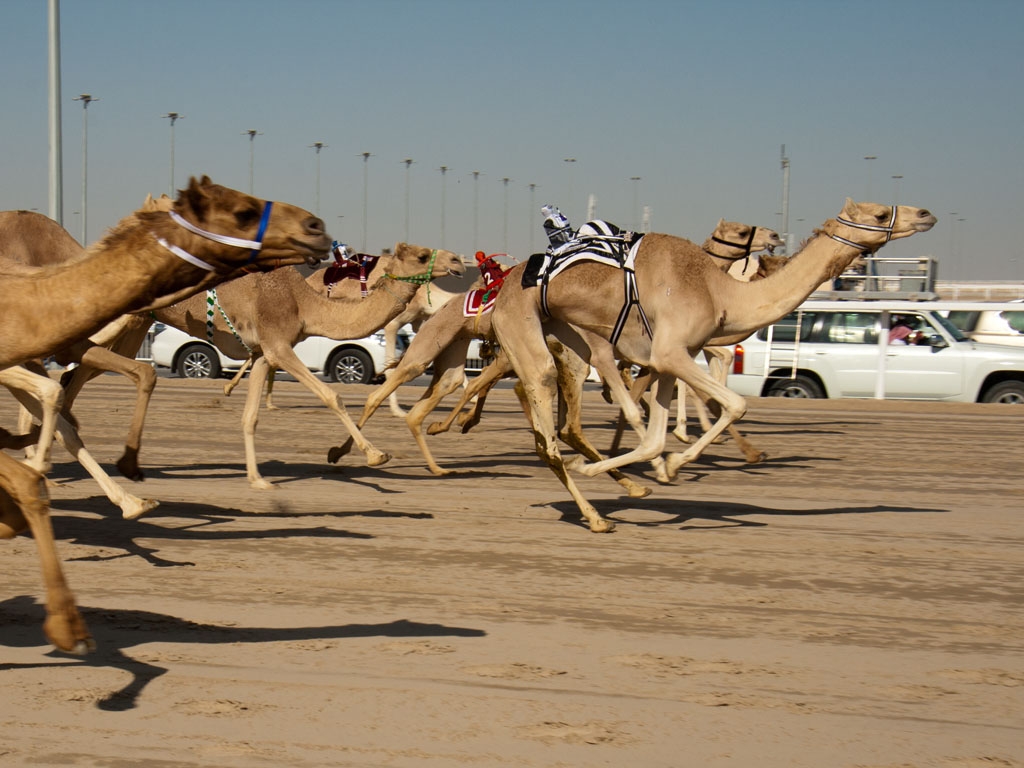
And yet, while Qatar embraces its heritage, it’s also forward-facing. The UAE and Qatar were the first countries to ban the use of child jockeys at the camel races, after claims of human rights abuses. Now the towering, grunting, snorting steeds are spurred on by a “robot”, a shoebox-sized contraption that sits atop the camel’s hump and ‘whips’ the animal along by remote control. It’s all very George Jetson.
“The robot is very good,” claims my guide Mohammad, a Bangladeshi by birth and one of a small army of migrant workers that keeps Qatar running. “No need to feed, no need to house, just press a button, and the camel runs!” And run they do; camels can gallop at up to 65km/hr, making for an exciting day at the races.
Qatar is in the news at the moment, thanks to its successful bid for the 2022 football World Cup, an event the entire nation is already gearing up for. Like Dubai and Abu Dhabi before it, Qatar is working hard to shrug off its persona as an isolated and xenophobic nation of white-robed sheiks and impossible wealth. The national airline, Qatar Airways, has done its part, bringing hundreds of thousands of first-timers to Doha on their way through to Europe or the Far East. Hotels, office blocks, stadiums, convention spaces, and a new international airport are all underway, and the horizon is dotted with cranes reaching into the cloudless desert skies. Now, the challenge is for the Qatari to navigate their future while keeping their past, and its rich heritage, intact.
You can’t help but be reminded how quickly Qatar is developing, the signs are everywhere. My hotel, the Sharq Village & Spa operated by Ritz-Carlton, is themed after a traditional Arabian compound. It’s a luxurious blend of ancient desert hospitality and cutting-edge technology. From its new rooftop sheesha bar, where locals and guests mingle under a canopy of stars, sipping sweet mint tea and talking into the night, it’s easy to follow the flight path of departing Qatar Airways jets taking off from the old airport, bound for any of the airline’s 90 destinations. They roar across the dark waters of Doha Bay towards the dazzling skyscrapers of the Corniche, a new CBD dressed in glowing neon and the blinking lights of cranes, where new towers are being born and the nation’s fortunes shaped.
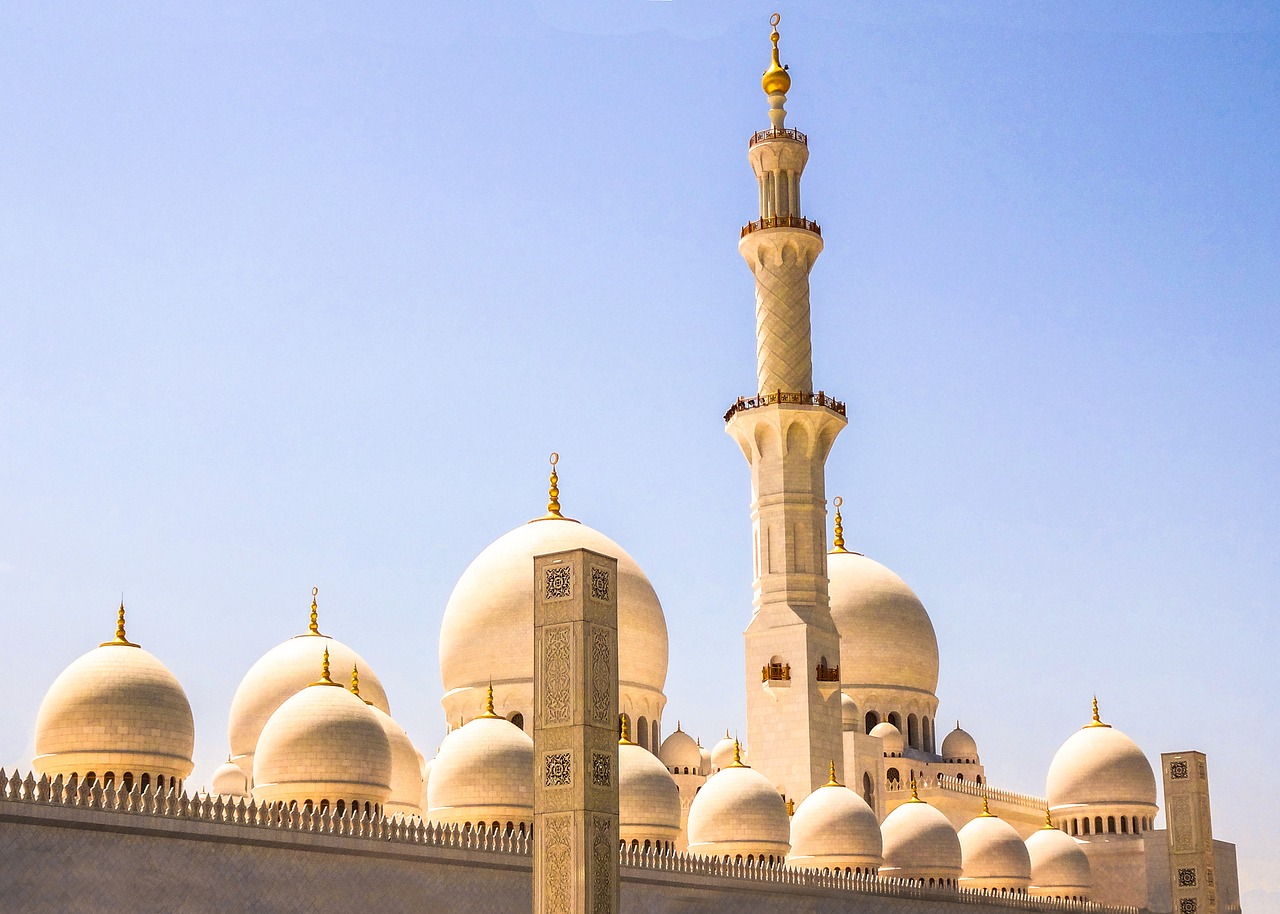
In Doha’s commercial heart, modern architecture is changing the face of Doha; the iconic Sheraton, a 1970s robotic-looking structure on the water’s edge, has been joined by a sea of skyscrapers, including a stunning otherworldly building by Jean Nouvel dressed in steel mesh, and the city’s own ‘Tornado Tower’, which was recently named the most beautiful building in the Middle East by the Council for Tall Buildings & Urban Habitat, a point of considerable local pride.
The Corniche technically runs right the way around Doha Bay and makes for a great late afternoon walk. On weeknights, the strip is ablaze with luxury sedans, sports cars, and massive SUVs as the city’s residents cruise through the warm evening air. On Fridays, the beginning of the Muslim weekend, you’ll find families settling in for picnics by the water’s edge, or playing in the nearby Al Bidda Park.
As the sun begins to hang low in the sky, I find myself following the Corniche and making my way up the long drive to Doha’s stunning Museum of Islamic Art (below), a cubist wonder that my hotel doorman insists looks like a woman peering out from behind a veil. Designed to capture and play with the rays of the afternoon sun, acclaimed Chinese American architect I. M. Pei was coaxed out of retirement for the project, which now stands as a beacon of sorts, gazing over the dhow harbor towards the forest of towering skyscrapers like a constant reminder of Qatar’s religious foundations. Located on its own ‘island’, the museum showcases a stunning collection of Islamic art from the 7th to 19th centuries, from across the Islamic world. Its hushed galleries and delicate exhibits are humbling, as are the sunsets through the museum’s massive glass ‘face’.
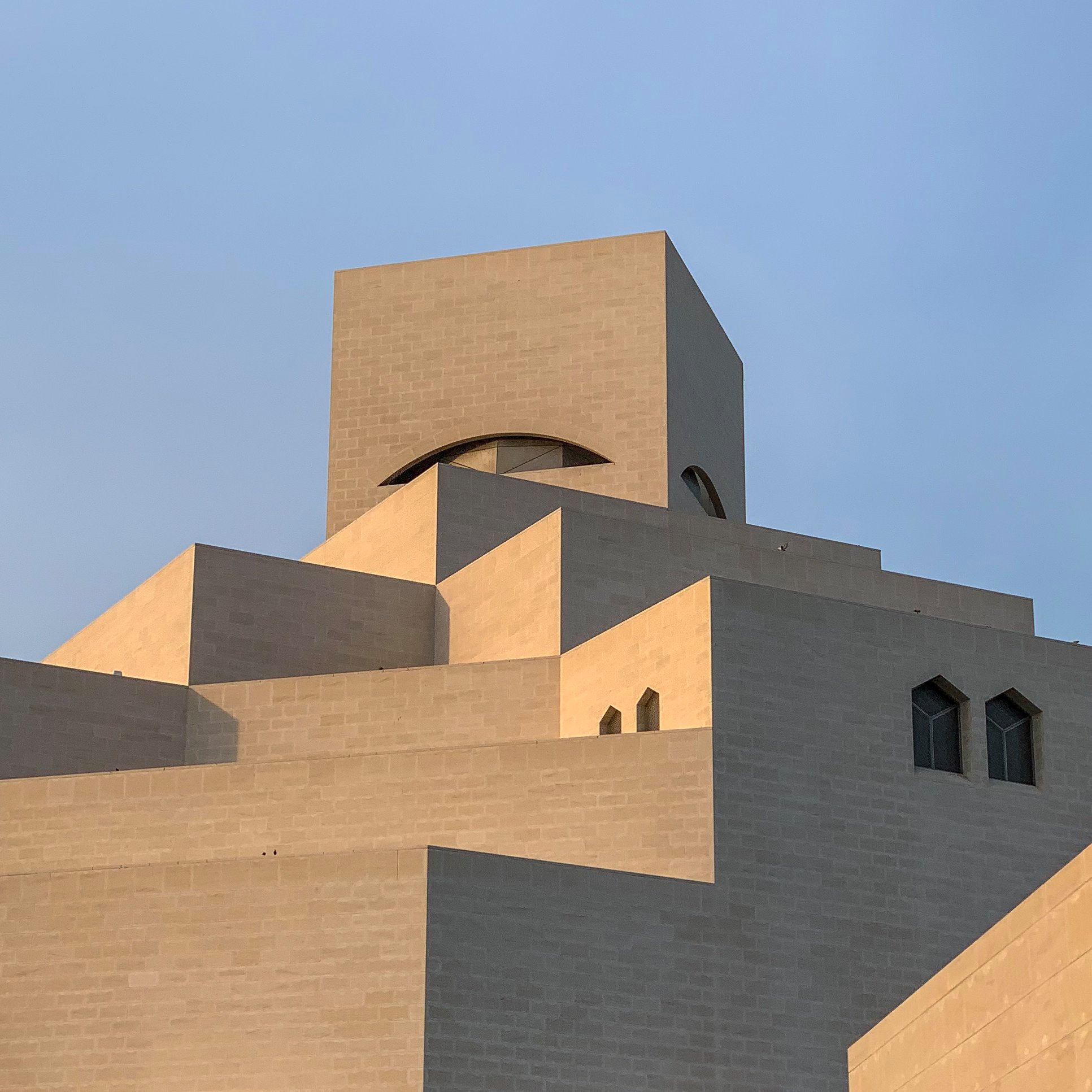
It’s not just tower blocks that are being developed in the new Qatar. Mathaf (museum in Arabic), the Arab Museum of Modern Art, opened last month with a collection of more than 6,000 pieces representing artistic movements from the 1840s to the present day. Located in a complex at Doha’s Education City re-designed by French architect Jean- François Bodin, the inaugural exhibitions include Sajjil: A Century of Modern Art, which gives a new perspective on Arab Modernism. Architect Jean Nouvel is also responsible for the design of the new National Museum, themed on the quickly disappearing Bedouin culture and pegged to open in late 2013, replacing the exist- ing National Museum, which was built in 1975.
The next morning, before the Arabian sun has a chance to scorch the air, I head out to see more of Qatar’s new developments. Within an hour I’m toting a hard hat and exploring the sprawling construction site of Qatar’s new convention center. The Qatar National Convention & Exhibition Centre (QNCC) is nothing short of remarkable; fronted by two towering ‘Sidra trees’, which traditionally shaded town meetings, the complex boasts 40,000sqm of exhibition space, cutting edge technology, 57 meeting rooms, and banquet space for 10,000 delegates, heralding a whole new era for the lucrative meetings and exhibitions market.
Across the street, nestled in lush emerald green lawns, is Qatar’s Education City, where six US universities, including Georgetown, Texas A&M, and Carnegie Mellon, have set up shop, teaching their top courses in state-of-the-art campuses. As the heart of Qatar’s education movement, the ‘city’ also hosts a children’s television channel by Al Jazeera, the Doha Debates, broadcast on the BBC, and world-class scientific and research centers.
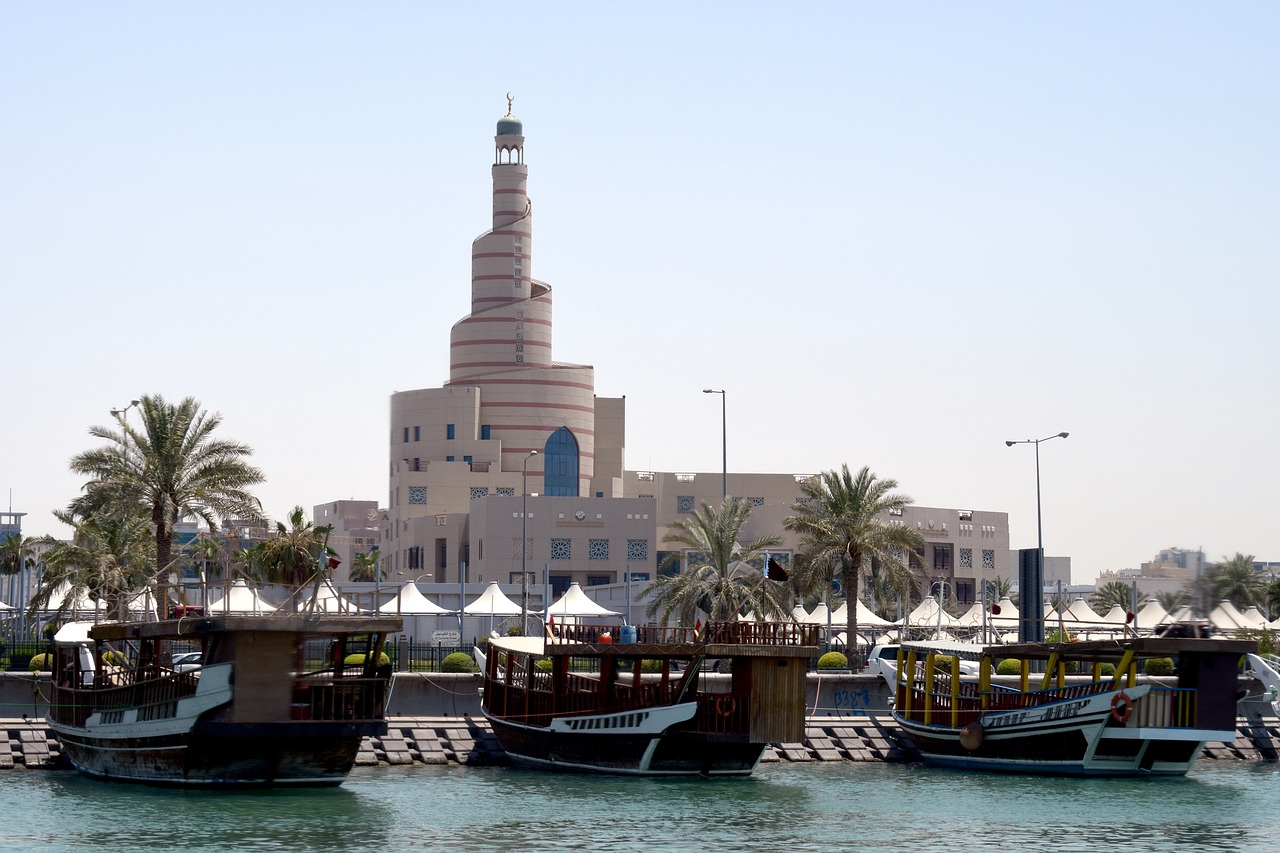
From the campuses, with their parking lot filled with late-model SUVs and sports coupes, I make my way to the traditional center of town, and the Souq Waqif, another example of modernity and antiquity living in harmony. At one hundred years old, this major market space has recently been renovated to its former glory. While thousands of people still visit the “Standing Markets” to buy clothing and perfume and to haggle for jewelry, the markets are taking on a modern feel as well, with alfresco dining and art galleries sprouting from the hard-packed mud and plaster buildings.
Under a crystal clear sky, I people-watch from the shade of a sheesha cafe, the scent of apple-infused smoke lingering in the air. Men, some dressed in spotlessly clean thawbs, others in western-styled suites, stroll through the markets in no particular hurry, until the call to prayer echos off the historic marketplace walls and the streets empty.
Just as I prepare to leave the souk, my eye catches a father and his son, both dressed in flowing white robes. The father is talking on a cell phone in the animated fashion of the Gulf, all hand gestures and turning on the spot, while the son plays with the family ‘pet’, a falcon the size of a house cat, its head covered by a small leather hood. Clearly, the child isn’t the slightest bit apprehensive about having the bird of prey sit calmly on his shoulder as the duo walk off across the souk, in the shadow of the nearby Fanar Islamic Centre’s winding tower (above).
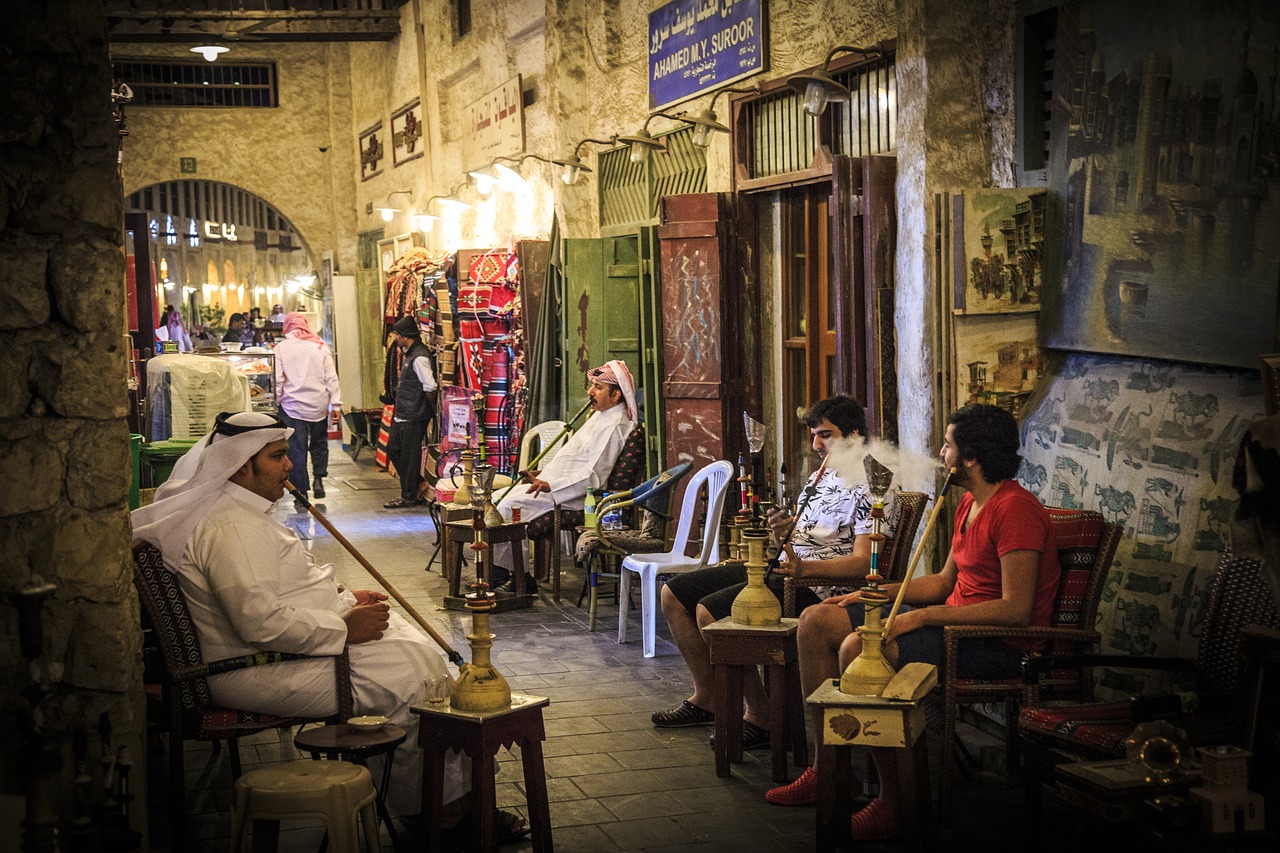
It seems the ancient art of falconry, among many others, is still alive and well in this ever-changing landscape. All hopes are that with the onslaught of the Asia Cup in January and ever-larger events in the lead-up to the World Cup, this tiny desert nation can continue looking to the past to prepare for the future.
For more Destination inspiration click here.
Want to Stay Up to Date? Follow us on Facebook or Instagram or Sign Up for our Bi-Weekly Newsletter.

